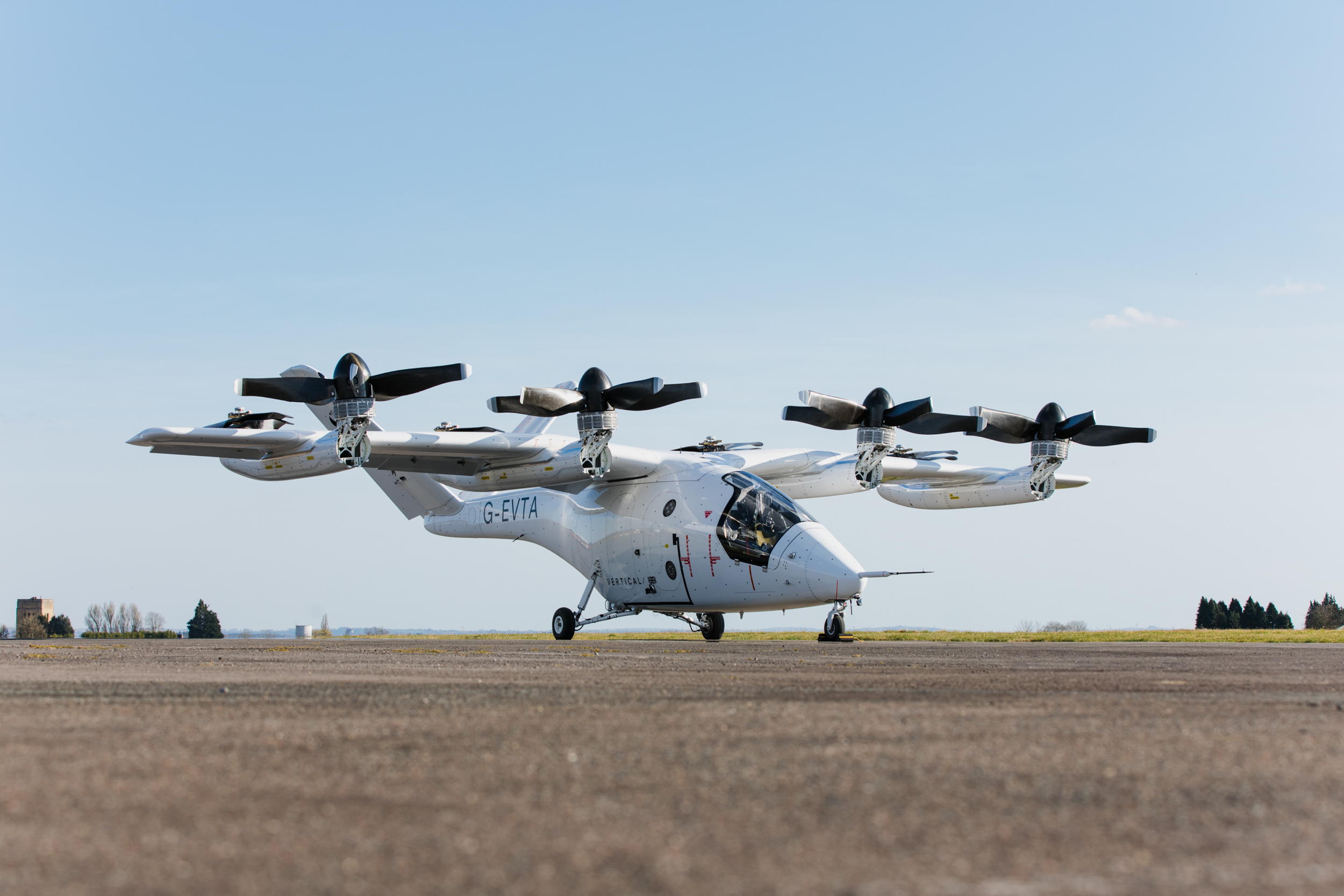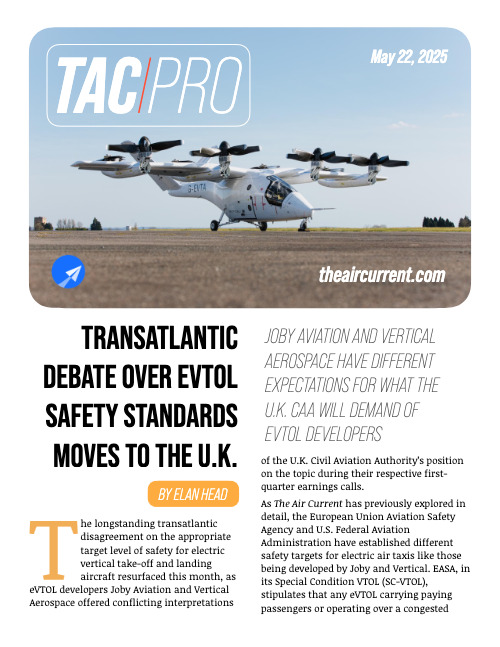Log-in here if you’re already a subscriber
The longstanding transatlantic disagreement on the appropriate target level of safety for electric vertical take-off and landing aircraft resurfaced this month, as eVTOL developers Joby Aviation and Vertical Aerospace offered conflicting interpretations of the U.K. Civil Aviation Authority’s position on the topic during their respective first-quarter earnings calls.
As The Air Current has previously explored in detail, the European Union Aviation Safety Agency and U.S. Federal Aviation Administration have established different safety targets for electric air taxis like those being developed by Joby and Vertical. EASA, in its Special Condition VTOL (SC-VTOL), stipulates that any eVTOL carrying paying passengers or operating over a congested area must be certified to a 10-9 standard, meaning that the theoretical likelihood of a catastrophic failure is no greater than one in a billion flight hours — the same standard imposed on transport category jetliners.
Related: Special Report: The number at the center of an eVTOL safety debate
Meanwhile, the FAA is holding aircraft like Joby’s to a standard of 10-8, or no more than one catastrophic failure per 100 million flight hours. That is in line with its standard for similarly sized helicopters and reflective of its “safety continuum” philosophy, which imposes less stringent design standards on smaller aircraft, in part to encourage the adoption of safety-enhancing technologies.
Since TAC first unpacked the arguments for and against each approach in early 2023, the FAA and EASA have shown few signs of compromising on their respective positions. More than five years after the U.K.’s departure from the European Union, the nation’s CAA is still navigating its position as an independent regulator, a process that is now occurring against the backdrop of shifting relationships between the U.S. and its historical allies across the pond.
Subscribe to continue reading...
Subscribe to Continue Reading
Our award-winning aerospace reporting combines the highest standards of journalism with the level of technical detail and rigor expected by a sophisticated industry audience.
- Exclusive reporting and analysis on the strategy and technology of flying
- Full access to our archive of industry intelligence
- We respect your time; everything we publish earns your attention


